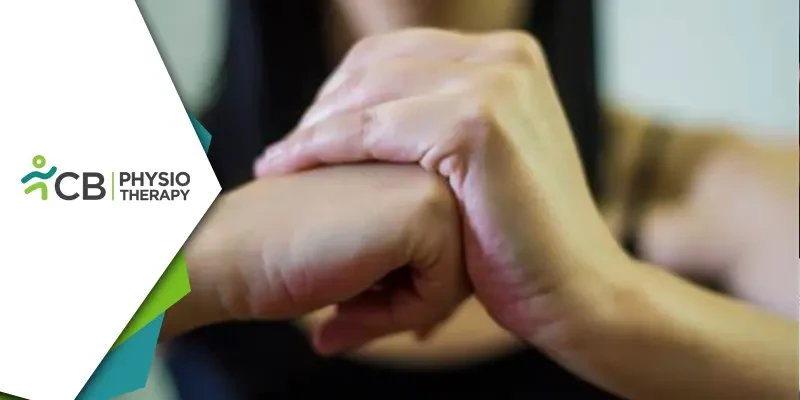We've all done it: that satisfying crack or pop from a knuckle, neck, or shoulder roll. But is joint cracking a harmless habit, or should we be worried about the long-term consequences? In clinical practice, we often encounter questions and misconceptions about this phenomenon. In this guide, we'll explore 10 facts and myths surrounding joint cracking to help you better understand this natural occurrence.
What is joint cracking?
Joint cracking is a phenomenon that many of us have experienced at some point in our lives. Whether it's the satisfying pop when you stretch your fingers or the audible crack during a workout, joint cracking has been a subject of curiosity and debate.What causes joint cracking?
Joint cracking is primarily attributed to the release of gas bubbles in the synovial fluid, a lubricating fluid present in our joints. When the joint is manipulated or stretched, these bubbles can burst, creating the characteristic cracking sound.Myths and Facts about Joint Cracking
Fact 1: Joint Cracking is NormalMyth 1: Cracking Joints Causes Arthritis
Contrary to popular belief, there is no scientific evidence linking joint cracking to the development of arthritis. Research suggests that, if done properly, cracking your knuckles or other joints does not increase the risk of arthritis.
Fact 2: The cracking sound comes from gas bubbles bursting in your joints.
Myth 2: Cracking your joints weakens them.
There's no evidence to suggest that cracking your joints makes them any weaker or more susceptible to injury. However, if you experience pain or swelling after cracking a joint, it's best to consult a healthcare professional to rule out any underlying issues.
Fact 3: Some people are naturally more prone to joint cracking.
Myth 3: Some believe that joint cracking is a sign of a problem or dysfunction.
However, in many cases, it is a completely normal occurrence. The sound is often caused by the release of gas bubbles when the synovial fluid in the joint shifts.
Fact 4: Joint cracking and popping during exercise can be normal.
Myth 4: Cracking joints always relieves tension.
While joint cracking can provide a sense of relief for some, it doesn't necessarily mean it's always beneficial. Cracking joints might temporarily relieve tension, but it's not a long-term solution for addressing underlying issues such as muscle tightness or joint instability.
Fact 5: The idea that habitual knuckle cracking leads to larger joints is a misconception.
Myth 5: Cracking knuckles lead to larger joints.
Studies have not shown any correlation between knuckle cracking and joint size. Joint size is largely determined by genetics and individual anatomy.
Fact 6: Cracking Shouldn't Be Painful.
Myth 6: Cracking your neck can cause a stroke.
While it's true that forceful twisting or cracking of the neck can irritate nerves and blood vessels, there's no evidence that it can directly cause a stroke. However, if you experience dizziness or pain after cracking your neck, it's best to avoid doing it again and consult a doctor.
Fact 7: Stretching and strengthening exercises can help reduce joint cracking.
Myth 7: Cracking Provides Lasting Relief.
While joint cracking may offer temporary relief and increased joint mobility, it does not address the root cause of joint issues. Seeking professional guidance from a physiotherapist is crucial to ensure a comprehensive approach to joint health.
Fact 8: Physiotherapy Techniques for Joint Health.
Myth 8: All Joints Are Safe to Crack.
Not all joints are suitable for cracking. Attempting to crack certain joints, like the spine, without proper knowledge and technique can lead to injuries. It's essential to exercise caution and, when in doubt, consult a physiotherapist.
Fact 9: Cracking your joints can be a sign of underlying conditions.
Myth 9: Cracking Equals Loosening Joints.
Contrary to the belief that joint cracking leads to joint instability, research suggests that occasional cracking does not cause joint laxity. However, chronic and excessive cracking may be a sign of joint issues that require attention.
Fact 10: Listen to your body.
Myth 10: Cracking your joints is bad for your posture.
There's no connection between joint cracking and poor posture. However, if you have poor posture, it can put additional strain on your joints, which may lead to more frequent cracking.
Understanding the facts and dispelling myths about joint cracking is crucial for maintaining optimal joint health. While occasional cracking is generally harmless, persistent issues or pain should prompt consultation with a physiotherapist or healthcare professional.
We trust that this blog has provided clarity on the common misconceptions surrounding joint cracking. Should you have additional inquiries, please don't hesitate to contact us at the provided number, 01140846393. Feel free to share this valuable information with friends and family who share an interest in understanding more about joint cracking!

